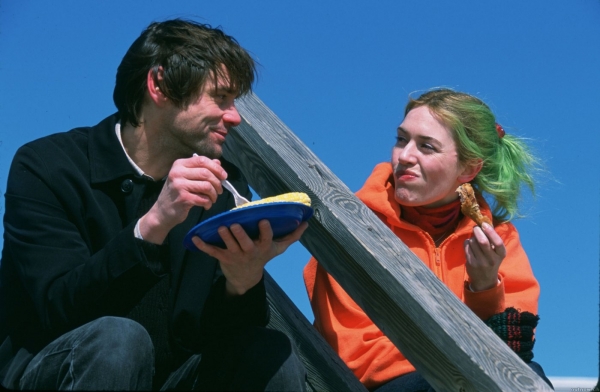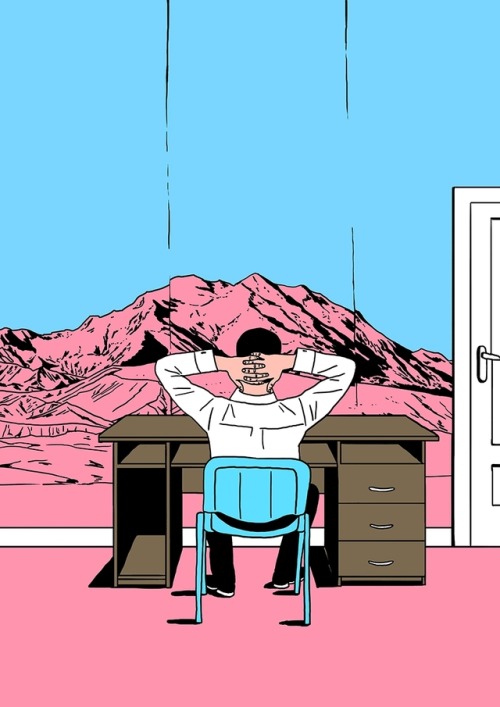
Wednesday, November 29, 2017
Monday, November 20, 2017
the language of dreams
As you probably know, hieroglyphics were called "the words of God" and were mainly used by Egyptian priests. A separate script, known as hieratic, was used to conduct the business of everyday life. Hieractic was a quicker, streamlined form of hieroglyphic, often abbreviated to the point of abstraction.
However, few people know that this pictorial language was preceded by an even more archaic ancestor - what is now referred to as 'the language of dreams.' The american psychologist Julian Jaynes hypothesised that prior to developing consciousness the human mind was divided into two parts, one that spoke and issued commands and another part that listened and obeys. These subconscious edicts were given in the language of dreams. The language of instinct and and archetype, encompassing all fear and all desire. This language was then said to persist alongside the maturation of human consciousness. To give an example, when two people fall in love, they are said to speak a remnant of this language. The native language of immortality and flight and wonder. The language of the infinite, of possibility and implausibility, of sensation over sensibility, of alternate reality.
While spoken languages primarily served a social function, the language of dreams differed in that it could only be understood by one person. Some argued that this use of the term 'language' was inaccurate and should be discontinued. Suggestions for a substitute included 'the unconscious voice' or 'narrative subconscious'. Nevertheless, the label of 'language' stuck.
Information regarding the history of the language has been exclusively gathered from the accounts of certain aboriginal communities. There is invariably no written record. The responsibility of transmitting this information is normally entrusted to skilled orators who are also charged with telling the history of their tribe. Firsthand accounts of specific stimuli or phenomena that reliably induce recollection of this lost language have been shown to demonstrate a remarkable level of concordance. Many of these involve what are now classed as hallucinogenic substances. The recollection itself appears to most often manifest as a kaleidoscope of visceral and emotional experience, variously described as a sense of utter contentment and inescapable terror, a feeling of universal connection and alienation, a feeling of paralysis and complete freedom. Once, a researcher asked an aboriginal elder if he could be taught the language. In return, the elder chuckled and asked the researcher if sparrows could be taught the language of trees.
The traditional view is that our early forms of speech did not correlate well with the language of dreams. The vocabulary of concrete objects and shapes did not readily lend itself to the formlessness of the mind. We could say what we needed to live, but struggled to convey what made us feel alive. We could not describe our electric fantasies or terrible longings, we could only offer dull analogies that sketched a poor outline of what we truly meant - like descriptions of reflections of shadows in a cave.
Over the years, many people have dismissed the language as juvenile and outdated. Certain groups dismiss it as myth or believe it to be a political invention. Still other groups maintain that institutions and people in positions of power throughout history have largely succeeded in supplanting this language with the language of aerodynamics, national infrastructure and fixed rate mortgages. Some people say that the language of dreams fell out of common use sometime during the 14th century, while others maintain that the language is still in use but has over the years evolved into a form that bears no resemblance to the original. Among certain obscure and arcane circles, there are furtive suggestions of a sect who continue to speak it in secret, whispered rumours of certain people who have never lost the ability to hear it.
---
Friday, November 17, 2017
light and salt II
choosing what to think about. Choosing how to think. Does any of that sound familiar?
---
thank you for the men and women who had to work so hard to make this meal possible
---
Starting F1 is a lot like learning how to cook pasta. The first couple of times it's going to be a disaster. The first time I tried I left half the spaghetti poking out the water so half was limp like tofu and the other half was hard as nails. Then you put in too much water, or not enough water. Sometimes you burn the pan. But the point is, if you keep doing it often enough - no matter how bad you were at the beginning - if you put effort into learning from your mistakes, you're only going to get better at it. And then one day you'll find that you've somehow cooked just the right amount of pasta to just the right consistency and prepared just the right amount of sauce. And to your surprise you do it again. And again. And again. The downside is that for a while at the beginning you're going to have to put up with eating some really lousy pasta. But after that, you get good enough to enjoy the pasta you're making. And then you get to enjoy making pasta.
Tuesday, November 14, 2017
Wednesday, November 8, 2017
the history of illusions
Greetings future dweller.
I am writing to you from the year 2017. In the year 2017 everybody greets each other by saying 'Greetings'. It might be weird in the future but here it's totally normal. There are a few things about this era that may have changed by the time you read this.
Everyone is currently obsessed with themselves. We have things called selfie sticks which are retractable / extendable handheld devices, comprised of hollow telescoping cylinders usually a meter1 in length when fully extended and 1-2 centimeters2 in diameter with a gripping tool at one end to which you would attach your phone3, the idea being that an arm's8 length was not sufficient to capture a good image of oneself, so the selfie stick allowed more distance between the phone and the user. The user would then take a picture of themselves and typically send these pictures to other people or post them to a shared space for others to comment on or approve of. Probably the main reason for this is that in 2017 self-esteem very much depended upon one's appearance. We had something called 'the internet' which allowed us to communicate with and send messages to people instantaneously despite being very very far away in euclidean space. 'The internet' gave rise to 'social media'. This was essentially a digital portrait of one's identity comprised of words, images and videos 9. This encouraged people to craft, create, present and promote an idealistic and polished version of themselves. We reasoned that if people liked our social media selves then by extension they liked us, and this made us very happy. And so we embellished and constantly adjusted our portraits and eventually became obsessed with what people thought of us. This made us very sad.
We also have fidget spinners. These are mechanical rotating handheld devices that serve no discernible purpose.
In 2017 mental health is a big deal. Nearly everyone struggles with depression and anxiety. These are diseases thought to be caused by chemical imbalances of serotonin10 and dopamine11 in the brain12. These diseases make people feel like life isn't worth living, or that they are worthless, or that nobody likes them, or feel frightened despite having nothing to be afraid of. Some people thought these feelings had always existed but it was only when we started paying a lot of attention to ourselves that we decided to name them.
In 2017 we had something called loneliness. This wasn't a disease but a feeling. This feeling stemmed from the idea that nobody truly understood you and that you didn't belong anywhere. Despite this being very unpleasant, it wasn't regarded as something pathological. It was something everybody experienced at some point. Having said that, people did strange and unexpected things to escape having to feel this way. We had social contracts called marriages where typically two people agreed to share ownership and responsibility for a number of things such as housing and offspring till one party died. These contracts unfortunately sometimes backfired and ended up exacerbating the condition. Most people relied on friendships13 to relieve their loneliness. Sometimes people resorted to making colourful markings on paper and peculiar arrangements of sounds and words as a way of expressing their inner thoughts and feelings that they felt reluctant to share in person. This was sometimes called 'art'. People noticed that art sometimes stirred up an emotional response in another person and compelled them to either express their appreciation to the artist or to create their own 'art'. When this happened, everyone involved felt less lonely.
People in 2017 were very good at not showing how lonely they felt, but sometimes you could tell. Sometimes you would notice it in the slope of their shoulders, or the sag in their smile. And sometimes people recognised this and chose to be tender and kind towards them. This made the other person feel the opposite of loneliness. Most people argued that this too was a kind of art.
1. A measure of distance↩
2. Another measure of distance. Much smaller than a meter↩
3. A handheld device used to transmit messages / your voice via digital signals to other people - but also are used to take pictures4↩
4. Static images coded as data5 stored within the phone. Previously devices called cameras served this purpose by taking 'photos' which were images printed on sheets of paper6 ↩
5. Information in the form of ones and zeros↩
6. Thin sheets of solid material onto which permanent marks are made - sometimes words but also often images7↩
7. Visual 2 dimensional representations of 3 dimensional objects↩
8. One's upper limb appendage - often used to hold things like phones, most of us have two of these↩
9. A rapid succession of images that gave the impression of one continuous moving image↩
10. C10H12N2O↩
11. C8H11NO2↩
12. The human body's central processing unit and command center↩
13. Relationships based on trust, mutual respect and shared interests / beliefs which could be depended upon to provide support / comfort / entertainment ↩
Saturday, November 4, 2017
Subscribe to:
Posts (Atom)
Long Revision
夕食後、ベアは湾のパノラマビューのために4月をエスプラネードに連れて行くことを申し出たが、彼女は翌朝早く空港にいなければならないと言って断った。代わりに、4月は金融街を二分し、川の河口を横断して少し上流のMRT駅に到着できるルートを提案しました。そこで彼らは手入れの行き届いた都...
-
The advertisement of a man - the cleverer you become the greater your capacity for (self )deception --- the ability of writing to edit a...



